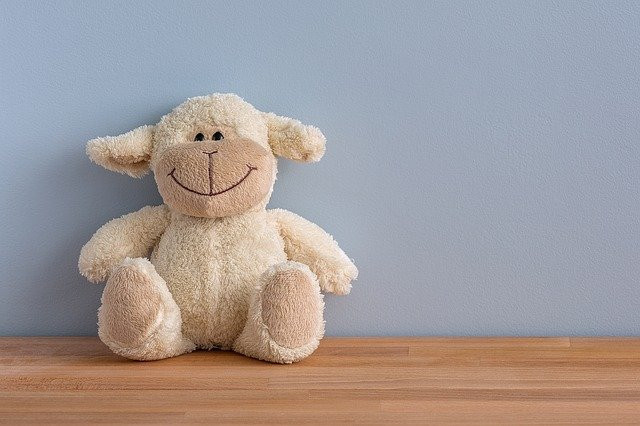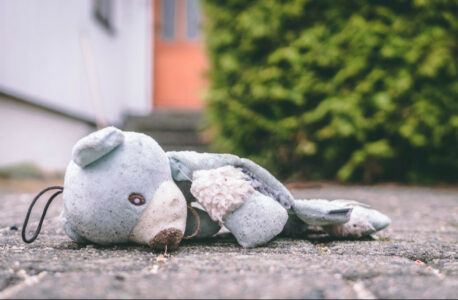Many children between the ages of one and twelve develop a strong attachment to a stuffed animal, usually shaped like a bear, a Llama, an elephant, or – less frequently – a penguin. The depth of the relationship can be astonishing. The child sleeps with it, talks to it, cries in front of it and tells it things that no one else would know. The attachment usually entails dragging them around, cuddling them at night, eating with them, spending sick days with them, and possibly even transporting them to school or daycare. This means that those precious stuffed friends will need a bath every now and then because they are the dirtiest company your kids will ever keep.

In this article we have researched the best way to wash stuffed animals while keeping their softness, cleanliness, and fluffiness. In addition, we have compiled a list of tested methods to help you make the most of your toys.
Method 1: Using a Washing Machine
You can machine wash stuffed animals if the care label allows it. This is a more convenient option, but it increases the risk of the toy being damaged.
Materials Needed:
● Mesh Bag or Zppered Pillowcase
● Mild Laundry Detergent
● Washing Machine (with a gentle or delicate cycle)
● Hairdryer (optional)
Steps:
1. Place the stuffed animal in a mesh bag; this safeguards it during the washing process to avoid color bleeding from other garments. It’s always better to wash the stuffed animals separately.
2. Choose the gentle or delicate cycle, using cold water.
3. When the cycle is completed, gently squeeze excess water out of the animal by pressing it against the side of a sink or bathtub.
4. Using a hairdryer, dry on a low heat setting. You can also air dry it outside, but this might take several days!
Method 2: Washing by Hand
Take a look at the label of the stuffed animal. It may state that it should be hand washed only or that it should be washed on the delicate cycle. Because your toy may be too soft or fragile, handwashing may be the most effective way to clean it thoroughly without damaging it.
Materials Needed:
● Water
● Mild Laundry Detergent
● Hairdryer
Steps:
1. Put a teaspoon of detergent in a basin, sink, or tub filled with lukewarm water. If necessary, you can add more. Mix thoroughly until the detergent is completely dissolved.
2. Immerse the stuffed animal in the water. Make sure that the detergent solution is completely covering it. After that, depending on how dirty it is, soak it in the solution for up to an hour.
3. Every now and then, give it a gentle scrub to help remove any remaining dirt. After soaking, drain the dirty water. Fill the container with lukewarm water and squeeze the plush toy under the water a few times to rinse the detergent. Continue until no more detergent is released.
4. Drain the tub and press the stuffed animal gently against the side or bottom of the tub to release as much water as possible.
5. Then, place a clean white towel on the floor and roll up the toy inside. Use a hairdryer to fluff it up when the toy is dry.
Method 3: Surface washing
Follow these steps if the care label on your child’s plush toy says to only surface wash it. This is very common for stuffed animals, and while it does not provide a thorough cleaning of the inside, it does keep it clean!
Materials:
● Clean White Cloth
● Mild Laundry Detergent
● Cold Water
Steps:
1. Mix cold water with a mild detergent to make a solution. Soak a clean white cloth in the solution.
2. Wipe the stuffed animal with a soft cloth. On the dirty areas, be a little more aggressive. If you’re using a detergent solution, make sure to rinse the soapy residue off the toy with a separate cloth dampened only with water.
3. Brush its hair out with a plastic brush with wide bristles. Make sure the hair is well-fluffed. Wipe the fur in one direction and brush it in the opposite direction until it is clean.
4. Using a hairdryer, dry on a low heat setting. You can also air dry it outside.
Method 4: General Cleaning (Dust and Vacuum Method)
Even if they can’t be immersed in water, most toys can handle general cleaning. To keep soft toys from becoming grimy and smelling bad, give them a thorough cleaning every few weeks.
Materials:
● Baking Soda
● Vacuum Cleaner
● Large Plastic Bag
Steps:
1. Fill a large plastic bag halfway with baking soda.
2. Place one toy at a time into the bag, shaking it vigorously to ensure that the toy is completely coated in baking soda.
3. Remove the item and set it aside for a few hours while the baking soda absorbs odors and greasy dirt.
4. To remove any residual powder, vacuum the toys using your vacuum’s dust attachment.
When Not to Machine Wash Stuffed Animals
You certainly don’t want your kids’ stuffed toys to get ruined. So, let’s go over some scenarios where you shouldn’t wash your toy in the washing machine. This saves you from tears (and money). You cannot wash stuffed animals if they:
● Have a music box inside.
● Things such as sequins are glued on. You should hand-wash them to be safe.
● If the care label says “hand-wash” or “surface clean” only.
● Are old and fragile
● Have delicate clothing, such as sparkly outfits or plastic crowns.
It is entirely up to you to ensure that your children’s stuffed animals are thoroughly cleaned. This will save you the heartache of a ruined toy after a wash and dry! Cuddly toys, like any textile, are susceptible to damage from direct sunlight, extremes in temperature, humidity, and insects. When storing and displaying them, keep these factors in mind. Follow tips on the best way to wash stuffed animals and you’re good to go!


